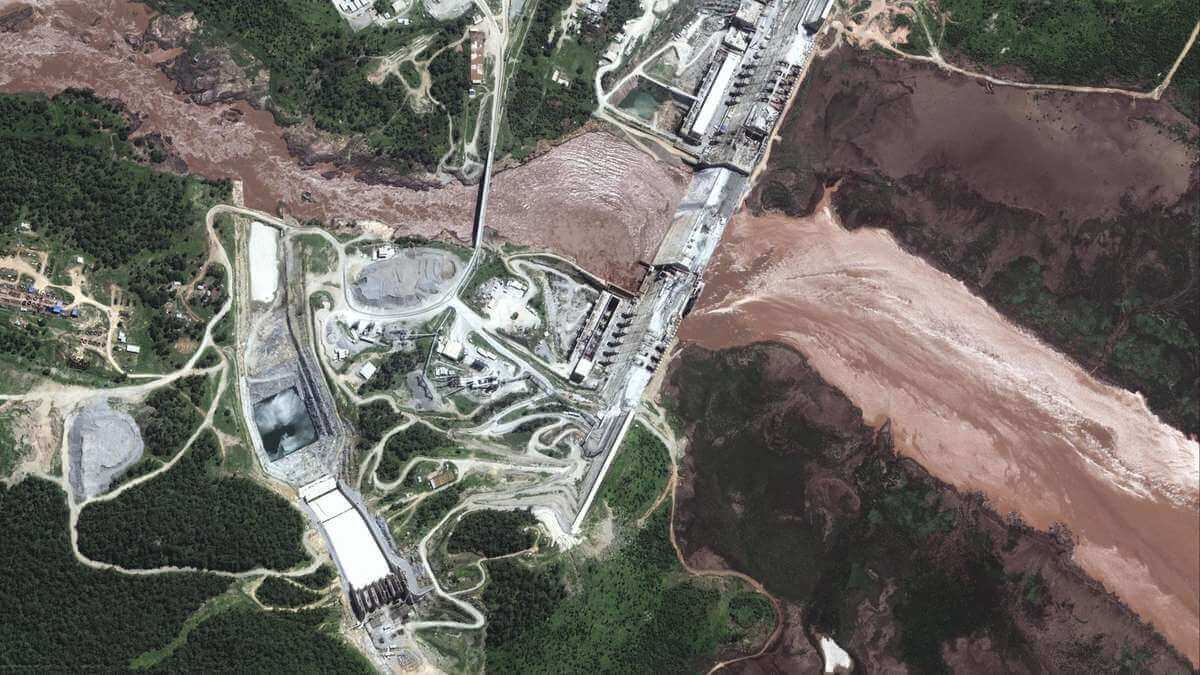In their latest rounds of negotiations that began in late June, Ethiopia, Egypt, and Sudan have yet again ended talks without reaching any conclusive agreement on the Nile dam dispute. According to Egyptian Foreign Minister Sameh Shoukry in a Monday statement, the African Union-brokered talks from 3-13 July did not yield any results.
The failure to reach an agreement among the three countries has sunk hopes of resolving their differences regarding the filling and operation of the Grand Ethiopian Renaissance Dam (GERD) project. Addis Ababa had pledged to begin water storage in the dam’s reservoir—which is Africa’s largest—during July’s wet season when the Blue Nile is slated to flood due to rains. Satellite images of the site released recently show that the reservoir has begun to swell, but analysts believe that it is due to the seasonal monsoon rather than any governmental action.
The Nile is an international watercourse that has historically been linked mainly to Egypt. It provides nearly 96% of Egypt’s renewable freshwater, and since the country receives abysmally low levels of rainfall, almost 95% of its total population lives within 12 miles of the river, using its resources for agriculture, industrial production, and sewage treatment. But over the past few decades, demands from other riparian states to access the river’s waters and utilize its resources have been perceived as a major national security threat by Egypt. The main issue remains to be that of the GERD, a $4.2 billion project with the aim of creating a massive hydroelectric power plant that would provide water and power to millions of Ethiopians, who currently face severe deprivation of these resources.
The Blue Nile, a major tributary of the Nile, originates in Ethiopia’s highlands and provides the river with 85% of its total water flow. Put simply, it provides an overwhelming majority of the water that Egypt’s existence depends on. However, Ethiopia has not been allowed to access Egypt's water resources due to a myriad of political, economic, and geostrategic reasons, even though it contributes such an overwhelming majority of Egypt’s total available water. The GERD is meant to solve Ethiopia’s water shortages and generate a new electricity source by which it can export power. In its riparian region, the GERD could majorly benefit Sudan since it would provide cheap electricity and reduce river flooding. However, Khartoum fears that, depending on the volume of water discharged daily, the large operation could threaten its own dams, which are far smaller and downstream.
Egypt and Sudan have been attempting to solve the dispute legally for a while. In February, Cairo and Khartoum held individual meetings with the World Bank and the United States without Ethiopia. Addis Ababa rejected the deal that came out of those meetings. Even talks brokered with the African Union (AU) in the past have failed. However, Ethiopia’s irrigation Ministry indicated that the country was open to further talks. All three countries are to submit reports on the talks to AU and South African President Cyril Ramaphosa, after which the AU is also set to prepare another mini-summit. On Tuesday, Sudan’s Ministry of Irrigation and Water Resources reportedly submitted its draft agreement and report on the dam dispute to the AU. However, no details on this agreement have been provided as of yet.
Nile Dispute Coverage:
Can International Arbitration Solve the Nile Water Dispute?
Ethiopia, Egypt, Sudan Resume Talks on Renaissance Dam After 4-Month Hiatus
Ethiopia, Egypt, Sudan Agree to AU-Brokered Nile Deal
Image Source: The National

